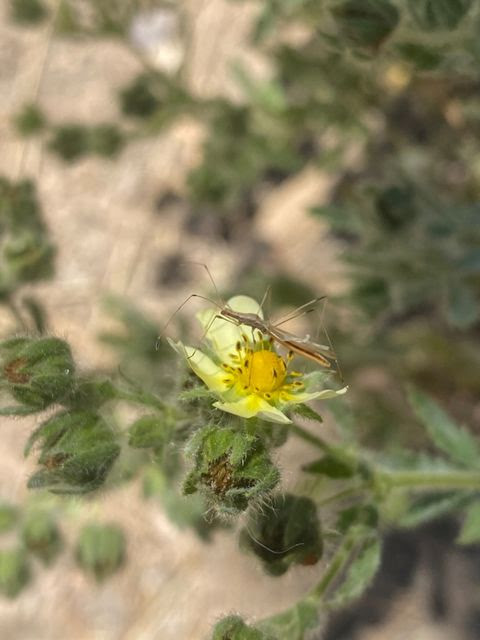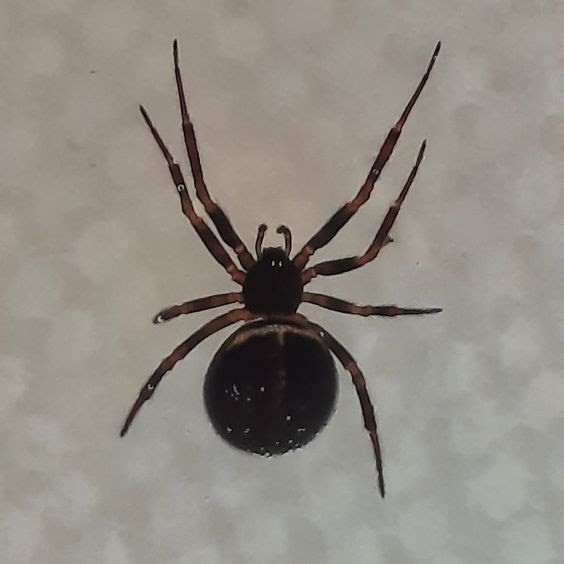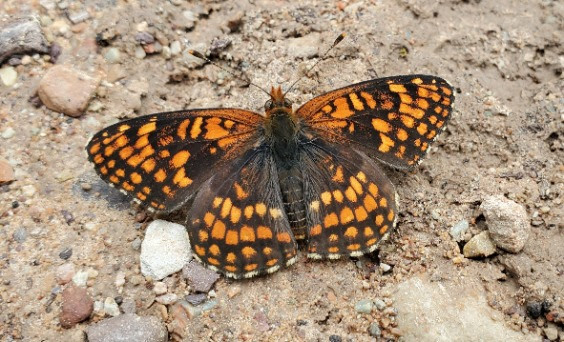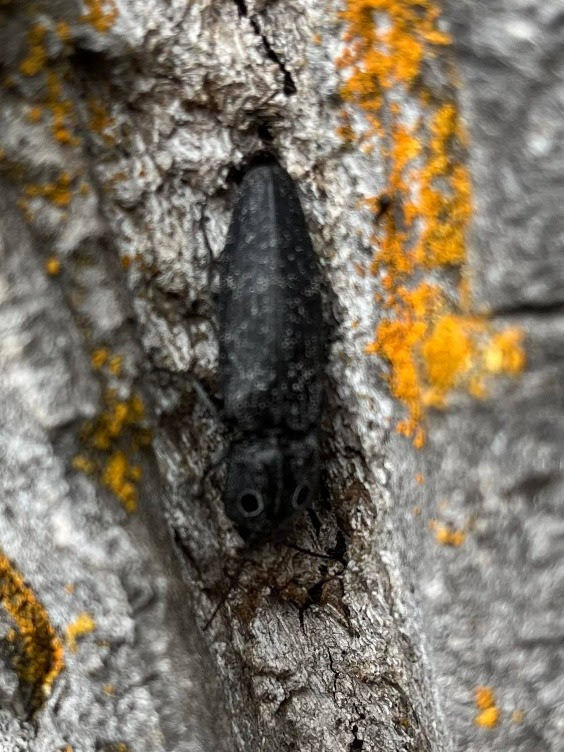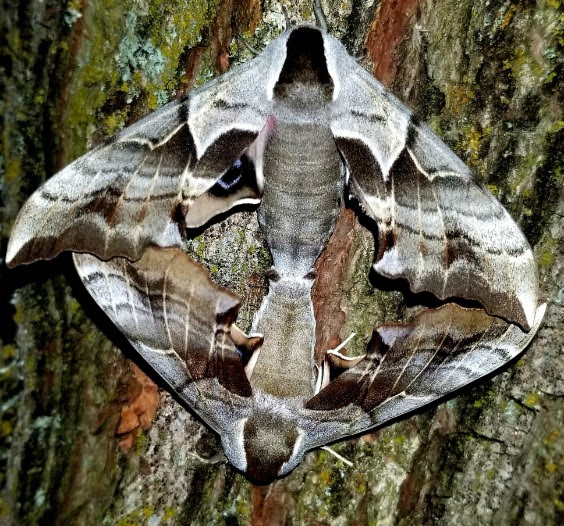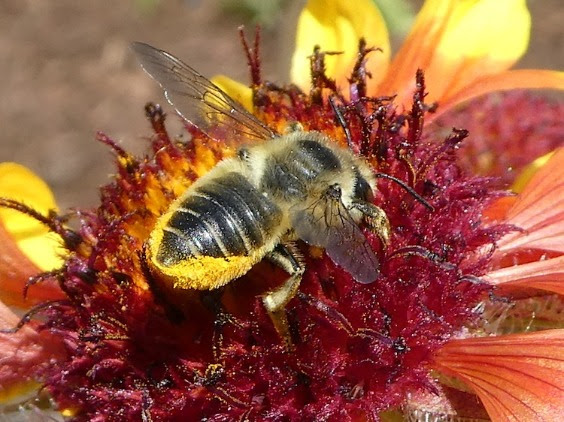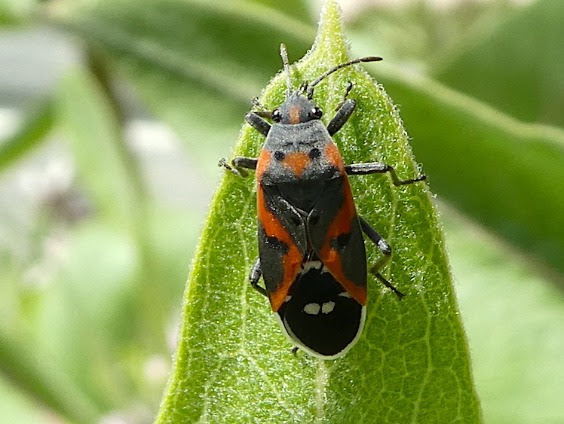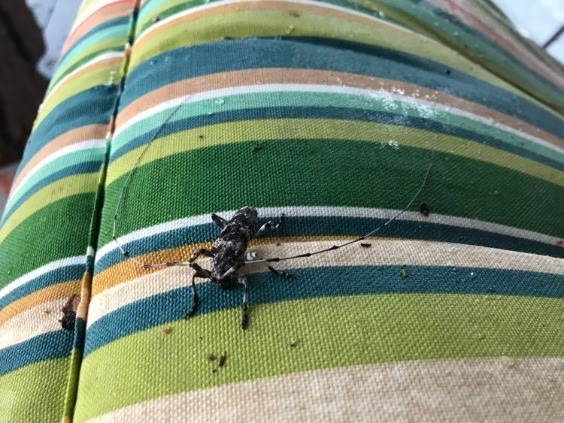One look and you’ll know how these bugs earned their name. Delicate, slender and long-legged, stilt bugs are typically less than 1 centimeter long and are often found on plants […]
Read MoreWhat’s Buzzin’
What can you see around Western Montana right now?
Cobweb Spider (Steatoda borealis)
Cobwebs spiders (family Theridiidae) are often housemates, wanted or otherwise. Even if you don’t see them, you may find their handiwork—messy, three-dimensional webs, with strands running in many different directions. […]
Read MoreNorthern Checkerspot (Chlosyne palla blackmorei)
This is one of several species of checkerspot butterflies in western Montana. Checkerspots are generally medium-sized, larger than crescents, and have orange and black checkered uppersides. Their flight is fairly fast, direct and […]
Read MoreWestern Eyed Click Beetle (Alaus melanops)
These large beetles (with noticeable eyespots) inhabit coniferous forests and are typically found from June through July. Their larvae live in dead or dying trees and feed on the larvae of woodborers […]
Read MoreSphinx Moth (Smerinthus ophthalmica)
The next generation of one of the most common and widespread moths in the Pacific Northwest is on its way! The adults do not feed, but caterpillars fatten up on […]
Read MoreLeafcutter Bee (genus Megachile)
If you’ve ever noticed nearly perfect ovals, circles or semicircles cut out of leaves (and even flowers), you might have some leafcutter bees nearby. These small bees readily inhabit “bee […]
Read MoreSmall Milkweed Bug (Lygaeus kalmii)
These colorful true bugs can be found throughout the US and southern Canada. Adults feed on milkweed seeds and nectar from a variety of flowers. They are also scavengers and […]
Read MorePonderosa Pine Bark Borer (Acanthocinus princeps)
The Ponderosa Pine Bark Borer is just one of over 25,000 species of longhorn beetles. The family is known for their impressive antennae, which are often as long or longer […]
Read MoreSatin Moth (Leucoma salicis)
Beautiful both in their immature and adult forms, satin moths were introduced from Europe in 1920 and can now be found across Canada and in the northwestern and northeastern states. Caterpillars eat […]
Read MorePolyphemus Moth (Antheraea polyphemus)
This is our most widespread silkmoth in the US. It is also one of our largest, with a wingspan of up to 6 inches. Like our other giant silkmoths, males […]
Read More